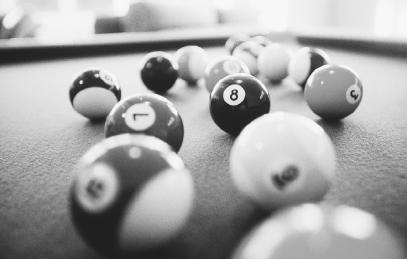Momentum - How it works
Momentum and Inertia
It might be tempting to confuse momentum with another physical concept, inertia. Inertia, as defined by the second law of motion, is the tendency of an object in motion to remain in motion, and of an object at rest to remain at rest. Momentum, by definition, involves a body in motion, and can be defined as the tendency of a body in motion to continue moving at a constant velocity.
Not only does momentum differ from inertia in that it relates exclusively to objects in motion, but (as will be discussed below) the component of velocity in the formula for momentum makes it a vector—that is, a quantity that possesses both magnitude and direction. There is at least one factor that momentum very clearly has in common with inertia: mass, a measure of inertia indicating the resistance of an object to a change in its motion.
Mass and Weight
Unlike velocity, mass is a scalar, a quantity that possesses magnitude without direction. Mass is often confused with weight, a vector quantity equal to its mass multiplied by the downward acceleration due to gravity. The weight of an object changes according to the gravitational force of the planet or other celestial body on which it is measured. Hence, the mass of a person on the Moon would be the same as it is on Earth, whereas the person's weight would be considerably less, due to the smaller gravitational pull of the Moon.
Given the unchanging quality of mass as opposed to weight, as well as the fact that scientists themselves prefer the much simpler metric

Velocity and Speed
Not only is momentum often confused with inertia, and mass with weight, but in the everyday world the concepts of velocity and speed tend to be blurred. Speed is the rate at which the position of an object changes over a given period of time, expressed in terms such as "50 MPH." It is a scalar quantity.
Velocity, by contrast, is a vector. If one were to say "50 miles per hour toward the northeast," this would be an expression of velocity. Vectors are typically designated in bold, without italics; thus velocity is typically abbreviated v . Scalars, on the other hand, are rendered in italics. Hence, the formula for momentum is usually shown as m v.
Linear Momentum and Its Conservation
Momentum itself is sometimes designated as p. It should be stressed that the form of momentum discussed here is strictly linear, or straight-line, momentum, in contrast to angular momentum, more properly discussed within the framework of rotational motion.
Both angular and linear momentum abide by what are known as conservation laws. These are statements concerning quantities that, under certain conditions, remain constant or unchanging. The conservation of linear momentum law states that when the sum of the external force vectors acting on a physical system is equal to zero, the total linear momentum of the system remains unchanged—or conserved.
The conservation of linear momentum is reflected both in the recoil of a rifle and in the propulsion of a rocket through space. When a rifle is fired, it produces a "kick"—that is, a sharp jolt to the shoulder of the person who has fired it—corresponding to the momentum of the bullet. Why, then, does the "kick" not knock a person's shoulder off the way a bullet would? Because the rifle's mass is much greater than that of the bullet, meaning that its velocity is much smaller.
As for rockets, they do not—contrary to popular belief—move by pushing against a surface, such as a launch pad. If that were the case, then a rocket would have nothing to propel it once it is launched, and certainly there would be no way for a rocket to move through the vacuum of outer space. Instead, as it burns fuel, the rocket expels exhaust gases that exert a backward momentum, and the rocket itself travels forward with a corresponding degree of momentum.
Systems
Here, "system" refers to any set of physical interactions isolated from the rest of the universe. Anything outside of the system, including all factors and forces irrelevant to a discussion of that system, is known as the environment. In the pool-table illustration shown earlier, the interaction of the billiard balls in terms of momentum is the system under discussion.
It is possible to reduce a system even further for purposes of clarity: hence, one might specify that the system consists only of the pool balls, the force applied to them, and the resulting momentum interactions. Thus, we will ignore the friction of the pool table's surface, and the assumption will be that the balls are rolling across a frictionless plane.
Impulse
For an object to have momentum, some force must have set it in motion, and that force must have been applied over a period of time. Likewise, when the object experiences a collision or any other event that changes its momentum, that change may be described in terms of a certain amount of force applied over a certain period of time. Force multiplied by time interval is impulse, expressed in the formula F · δ t, where F is force, δ (the Greek letter delta) means "a change" or "change in…"; and t is time.
As with momentum itself, impulse is a vector quantity. Whereas the vector component of momentum is velocity, the vector quantity in impulse is force. The force component of impulse can be used to derive the relationship between impulse and change in momentum. According to the second law of motion, F = m a ; that is, force is equal to mass multiplied by acceleration. Acceleration can be defined as a change

Thus, force is equal to an equation that can be rewritten as F δ t = m δ v . In other words, impulse is equal to change in momentum.
This relationship between impulse and momentum change, derived here in mathematical terms, will be discussed below in light of several well-known examples from the real world. Note that the metric units of impulse and momentum are actually interchangeable, though they are typically expressed in different forms, for the purpose of convenience. Hence, momentum is usually rendered in terms of kilogram-meters-per-second (kg · m/s), whereas impulse is typically shown as newton-seconds (N · s). In the English system, momentum is shown in units of slug-feet per-second,

Comment about this article, ask questions, or add new information about this topic: